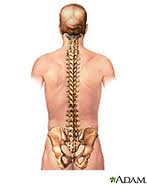What is Minimally Invasive Spinal Surgery?
Your spinal surgeon wants to relieve you of your back pain, using methods that fulfill all of the goals of correcting your spinal condition while at the same time minimizing collateral damage to tissue surrounding the spine, thus ensuring a focused correction on just the spine issues that are causing your back pain.
As you explore your surgical options for managing back or nerve pain with your spinal surgeon, you’ll no doubt also prefer a procedure that is as minimally invasive as possible. So to help you understand what is involved in minimally invasive spinal surgery, here are some details:
- Minimally invasive techniques are being used for a wide range of spine procedures, including decompression, which removes bone spurs or a piece of herniated disc to relieve pressure put on spinal nerves, and also for spinal fusion.
- Minimally invasive spine surgery is sometimes called ‘less-invasive spine surgery.’
- In traditional open surgery, incisions may be 5 to 6 inches long, sometimes longer, to allow a surgeon to see and access the spine. In contrast, minimally invasive spine surgery allows your spinal surgeon to make one or multiple smaller incisions and then spread the muscles apart, instead of detaching them to gain access to the spine for your procedure. When muscles can be easily moved away instead of detached, it’s easier on your body during the surgery and can make your spinal surgery recovery easier and not as painful.
- You might think that making multiple incisions for your spine surgery is the same as making one big incision, but it’s is not the same. It’s not the size of the incision that matters during spine surgery, but rather what your spinal surgeon is doing underneath: targeting damaged portions of the spine while minimizing damage to the structure of the spine.
- Some of the tools your spinal surgeon may use during your minimally-invasive spine surgery include magnification via either specialized glasses or a microscope, so that your doctor can clearly see every detail of your spinal structure, including nerves; fiber optic illumination that further increases visibility in the treatment areas; and a live X-ray called fluoroscopy that provides a view of the entire spinal region, even of areas not visible within the incision, which lessens the need for the wider exposure of a larger incision. These innovative spine surgery tools may help your spinal surgeon fulfill all of the necessary treatment goals while preserving as much of the surrounding tissue as possible, while also leaving you with more easily cared-for incisions after your spinal surgery.
- Other advantages to minimally invasive spinal surgery may include less bleeding and shorter stays in the hospital.
Minimally invasive spine surgery is often quite attractive to back pain patients, who may be worried about post spinal surgery pain levels and be even more overwhelmed by the thought of an enormous incision that would limit their mobility and require the help of a loved one for daily care. Minimally invasive spinal surgery can, when appropriate, reduce wound care concerns, and may allow you to enjoy the pain-reduction benefits of your spinal surgery sooner.
Earn Back Pain Relief with Minimally Invasive Surgery
Your doctor can discuss with you the ins and outs of your particular options for minimally invasive spinal surgery, which of course depend on the unique elements of your condition. It is very important to remember that your spinal surgeon will not compromise the primary goal of correcting your spinal issues to the best degree possible and that safety is of the highest importance! If pressure on a nerve needs to be relieved, your surgeon may or may not recommend a minimally invasive procedure for the best possible outcome. In short, the technique cannot get in the way of the fix!







